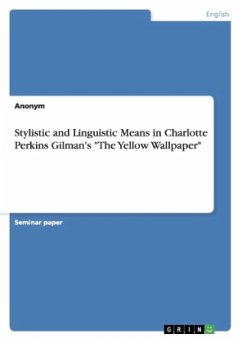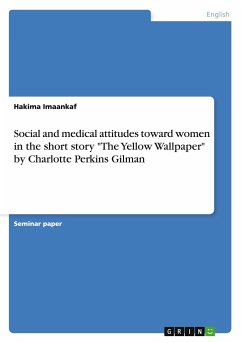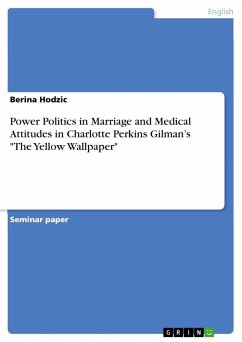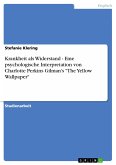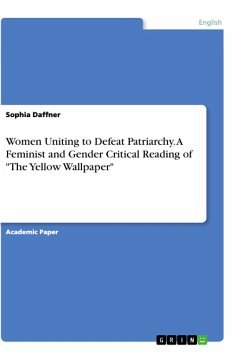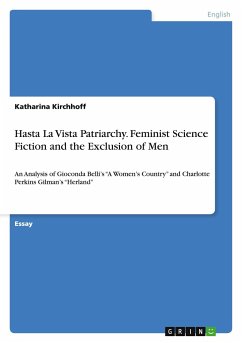Seminar paper from the year 2004 in the subject English Language and Literature Studies - Literature, grade: 2,7, Johannes Gutenberg University Mainz, language: English, abstract: 1. IntroductionCharlotte Perkins Gilman's "The Yellow Wallpaper" (1892) has often been subject of feminist discourse but very seldom of queer discourse. In order to prove the importance of a queer reading, we analyse language and style of this text in order to present an interpretation beyond the feminist one which seems to be the most obvious. A close reading of the first 39 paragraphs will be given to make clear that "The Yellow Wallpaper" definitely offers enough textual material to read the text through a queer reader's gaze. While there has been speculation on the topics to attempt to argue that Gilman herself was queer, a close analytical reading of the text only will prove this idea and will speak for itself.Before we have a closer look at the stylistic devices relevant for our interpretation, weneed to give a short definition of the term "queer" and how it is used in our context. Crewe states that the adjective "queer" was used by Gilman in a period of great cultural change. The actual meaning at the time was "peculiar" or "strange", but it slowly shifted to a euphemism associated with homosexuality (1995: 279). Furthermore, Crewe explains that the term connotes "certain consciousness of repression" which might lead "to 'queer' self-recognition on the part of the reader" (1995: 287). With the help of a queer analysis, the reader herself might be able to recognize the queerness of the text and the queerness of any kind in herself. We are using the term "queer" on several levels: firstly, to define same-sex desire; secondly, to describe a situation which varies from the norm, or male-defined, status quo; thirdly, to express queerness in characters; and fourthly, to describe the reader's and the writer's awareness that there is something strange, different, abnormal, peculiar, or awkward in the prevalent society, or, as Adrienne Rich states, about the "regime of compulsory heterosexuality" (Crewe 1995: 279).2.An Analysis of Charlotte Perkins Gilman's "The Yellow Wallpaper" "The Yellow Wallpaper" is enormously rich with stylistic elements. This is obvious in the layout, the text form and the text type. Gilman's text is a short story, written in prose, consisting of 83 lines which are divided into 39 paragraphs and is structured like a journal, written in...

